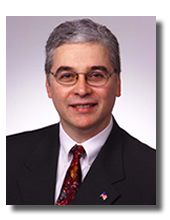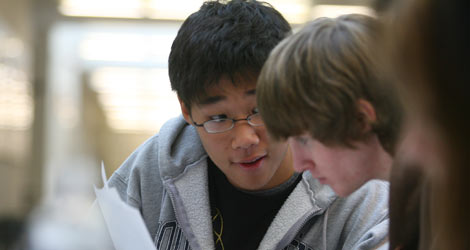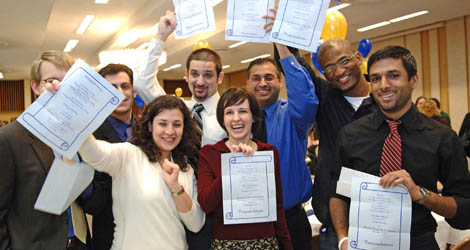 As the Director of the University of Toledo Plastination Laboratory, I am pleased
to welcome you to this website.
As the Director of the University of Toledo Plastination Laboratory, I am pleased
to welcome you to this website.
The University of Toledo Plastination Laboratory was founded in 1987 as a multidisciplinary effort by the Departments of Anatomy, Pathology, Radiology, and Dentistry of the former Medical College of Ohio. The central mission of the laboratory has been to provide plastinated specimens to facilitate education of healthcare students of the University of Toledo and undergraduate students of the Toledo schools and surrounding vicinity. In addition, the laboratory has been instrumental in creating a permanent collection of normal and pathological specimens that are used for study and review.
Specimens produced by plastination are dry and durable. They are easily manipulated and typically retain the natural contours of the specimen. The main goal for using plastinated specimens is to minimize the negative aspects of dissection and handling of biological specimens, which contain formaldehyde and/or phenol. As a result, students’ exposure to hazardous fixatives is reduced.
Within the realm of healthcare education, specimens produced by plastination have an increasingly important role in both the teaching and research aspects of the fields of anatomy and pathology. The importance of accurate, detailed, durable demonstration and study specimens of gross anatomical, neuroanatomical, and gross pathological materials is increasing as the reduction in class contact hours continues.
The use of plastinated specimens is especially beneficial in the education of the non-medical public such as lawyers, school teachers, and non-professional students from grade school through college. The popularity of plastinated specimens is evident by the success of the Student-to Student program of the University of Toledo, College of Medicine. Most importantly, however, plastination permits preservation of organs or specimens with unusual morphology or exhibiting a rare disease. These specimens are invaluable assets for museums of anatomy and pathology because they offer the opportunity to educate the future generations of healthcare providers as well as the general public.
Since Dr. Gunther von Hagens introduced the concept of plastination in 1977, interest in plastination has moved from laboratory to classrooms and, more recently, to museums around the world. The popularity of plastinated specimens has captivated the public imagination; since 1996, when Dr. von Hagens started the world tour of Body Worlds more than 20 million people around the world have viewed the exhibits.
Specimens prepared at the Laboratory of Plastination of the University of Toledo have
been displayed in exhibits in museums across the United States, Europe and China.
As early as 1993, we had created a series of plastinated cross-sections of brain specimens
and loaned them to the Museum of Science and Industry in Chicago, IL. The cross-sections
are part of the highly-acclaimed exhibit “Imaging: The Tools of Science”. This exhibit, which has been viewed by over 10 million visitors, is sponsored by
the Howard Hughes Medical Institute and was recognized with a coveted award from the
American Association of Museums, a national accrediting organization.
In 2011 we provided specimens on loan to a newly created exhibit called “Brain: The Inside Story”, an international project co-produced by the American Museum of Natural History, New
York; Guangdong Science Center, China; and Granada Science Park Museum, Codice, Idee
per la cultura, Torino, Italy and Comuni di Milano- Assessorato Cultura, Italy. (http://youtu.be/wV6eA3wvTRs)
"Brain. The Inside Story" - The American Museum of Natural History, New York City,
11/20/2010 - 8/14/2011
"Brain. The Inside Story" –Guangdong Science Center, Guangzhou, China, 11/20/2011
– 4/20/2012
"Brain. The Inside Story" – Granada Science Park Museum, Granada, Spain, 10/26/2012
- 9/1/2013
The University of Toledo Plastination Laboratory can plastinate specimens provided by other institutions. The laboratory can also provide custom prepared plastinated specimens exclusively to educational institutions in the United States, with the understanding that specimens will be used solely for education. Please contact Dr. Baptista in the above address for more information.




